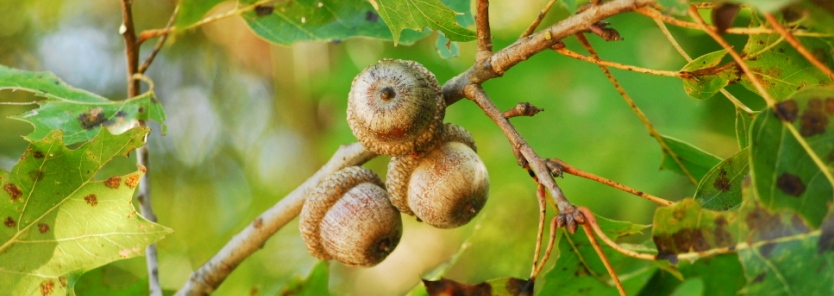1. Extremely Fast Juvenile Growth
Red oaks will boost your ego with their fast growth, especially in the first few years of their life. This fast growth and resulting large canopy at a young age translates to them getting ahead of the competition, and heavy crops of acorns production when they are mature.
2. Wide Window of Acorn Production
Most of the common white oak species drop their acorns over a narrow time frame in the early fall. Red oaks, on the other hand, begin their descent in the early fall and can drop acorns literally until early spring the following year! So the reds can feed hungry wildlife when they need it most.
3. Site Plastic
Compared to the white oak group, Red oak species are not quite as picky about the site where they are planted. For example, that means you can get away with putting a river bottom dwelling pin oak or water oak further up the hill than they naturally occur, without any ill effects.
4. More Reliable Acorn Crops
Red oaks aren’t known for having nearly as many “off years” with acorn production compared to white oaks. Heck, some white oaks may go several years without producing whereas the Reds seem to produce at least some acorns on bad years.
5. Acorns Last Longer on the Ground
Red oak acorns by design do not sprout a root until the following spring, so they remain viable for wildlife consumption for a much longer period of time compared to white oaks. Although high in tannin, winter rains slowly leach the tannins away, making them more palatable to game in the winter when they need it most.
6. Fall Color
Not everyone grows oak trees solely for the wildlife benefits. Many of the red oaks have beautiful fall color. Examples of some of the red oaks that can show outstanding color displays in the fall are: Scarlet oak, Nuttall oak, Shumard oak, and most of the red oak hybrids.
Want to plant some Red Oak seedlings on your property? Check out the awesome collection of Red Oaks by Nativ Nurseries!







